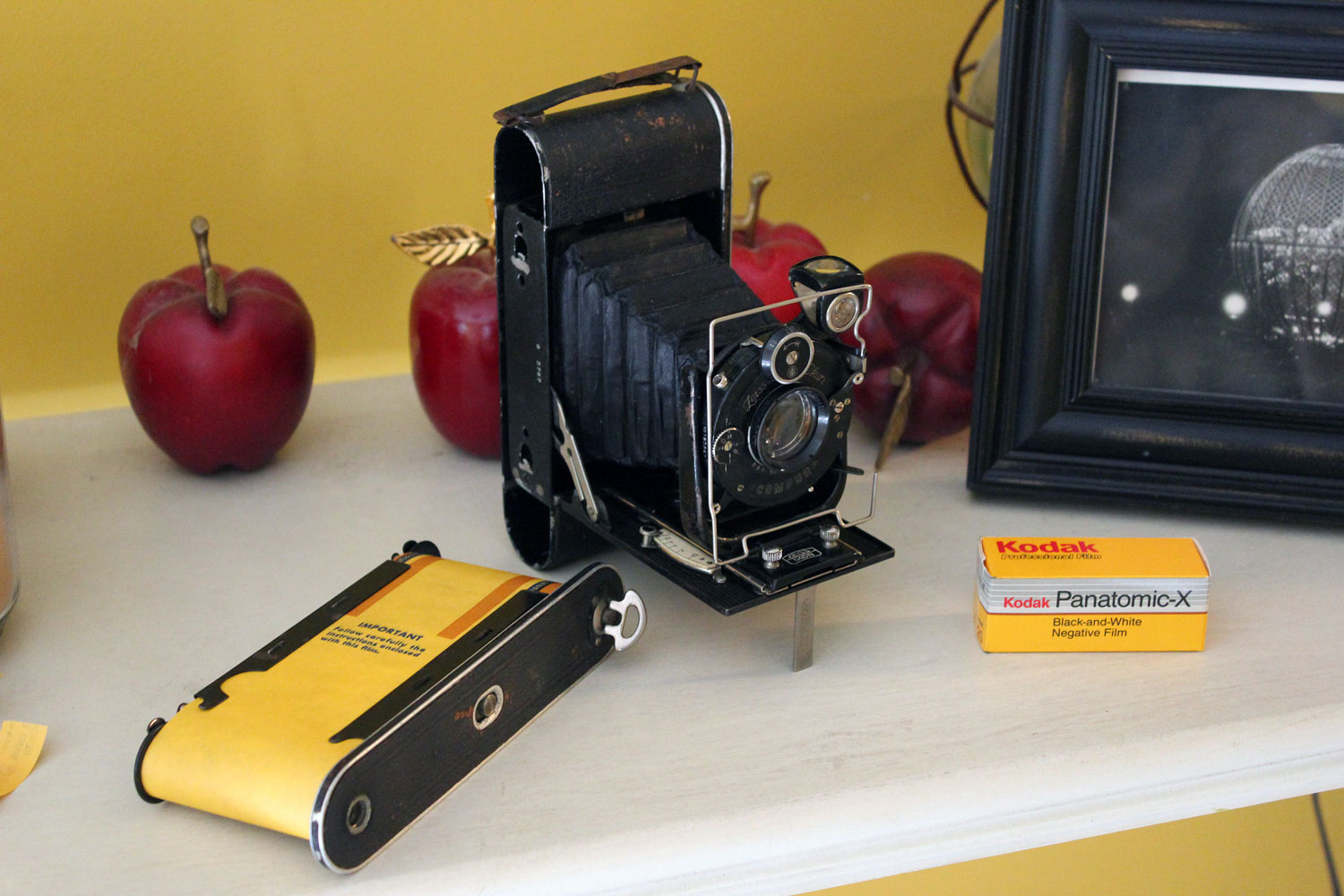Recently I became interested in Kodak Panatomic-X, a legendary film which was originally released in 1933 and discontinued back in 1987. With a beautiful old-school tonality, very fine grain and slow speed at ASA 32, this classic panchromatic black and white film was ultimately replaced by the modern T-grain of Kodak T-MAX 100. Its discontinuation happened long before I began thinking about anything more than Transformers and Saturday morning cartoons, so I never had the opportunity to use the film when it was fresh.
The magic of eBay soon coughed up three 120 format rolls that had expired in 1987 and had been freezer stored since bought new (I chose to believe what I read on the internet). I knew exactly what camera to run my first roll through.

Also dating from the early 20th century is the most treasured camera in my collection: My grandfather’s Zeiss Ikon Cocarette. Think of this 6×9 120 format folder with its 105mm f/4.5 Dominar Anastigmat lens as the 1920’s version of your advanced amateur Nikon or Canon. Grandpa either bought this camera himself or was gifted it sometime in the 1930s. He carried this camera throughout his service in Europe during the Second World War.
He used it to take photos of the things he saw and the places he had been…photos still in the family collection, including sobering and horrifying photos from the concentration camp his unit liberated. He also used it for a while when he returned home, taking photos of family and the things around him before upgrading his camera in the mid-1950s.
The Cocarette was the only choice to run my newly acquired Panatomic-X through. A film with a pedigree going back to the 1930s in a camera from the 1920s was definitely worth trying out.





I exposed the film at EI 16, just in case the fog was worse than I thought it might be. Inspired by Grandpa’s own late 40s / early 50s family outing photos, these five frames were taken in that style. In fact, the frames are from our own family outing to New London and Mystic, Connecticut late August 2019. In true tourist fashion, I burned through the 8 frames taking photos of nothing in particular including the out-of-focus family member close-ups which were apparently mandatory back in the 40s and 50s.
Developed in Kodak HC-110 dilution B, I was pleasantly surprised by the results. In true fine-grain frozen film fashion, the fog was low and the results were surprisingly good. The mushiness of a long-expired film I think adds to the charm. The Zeiss Ikon and the Panatomic-X performed just like they should, with that great anastigmat character across a generous 6×9 frame of classic black and white goodness.
I hope you enjoy the look of the 1930s as much as I enjoyed running through a roll of Panatomic-X. 🙂
~ Jason
Submit your 5 Frames… today
Get your own 5 Frames featured by submitting your article using this form or by sending an email via the contact link at the top of the page.
Share your knowledge, story or project
The transfer of knowledge across the film photography community is the heart of EMULSIVE. You can add your support by contributing your thoughts, work, experiences and ideas to inspire the hundreds of thousands of people who read these pages each month. Check out the submission guide here.
If you like what you’re reading you can also help this passion project by heading over to the EMULSIVE Patreon page and contributing as little as a dollar a month. There’s also print and apparel over at Society 6, currently showcasing over two dozen t-shirt designs and over a dozen unique photographs available for purchase.








2 responses to “5 Frames… Of 1980s expired Kodak Panatomic-X (EI 32 / 120 format / Zeiss Ikon Cocarette)”
What a great article! Really enjoyed this Jason!
Such an awesome write-up!